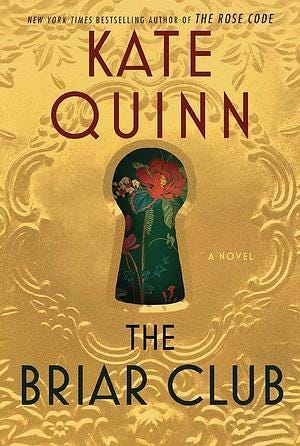Book Review: The Briar Club by Kate Quinn
It's like if Murder on the Orient Express and Sisterhood of the Traveling Pants had a baby—except this baby has some of the sharpest political commentary you’ve ever read.
⭐⭐⭐⭐⭐
Summary: Set in Washington, D.C., in 1950, the story follows the women of Briarwood House, a rundown all-female boardinghouse where secrets lurk behind every white picket fence. When the elegant and enigmatic widow Grace March moves into the attic, she unknowingly becomes the glue binding an unlikely group of neighbors: Fliss, a polished Englishwoman with a crumbling facade; Nora, the police officer’s daughter caught up with a gangster; Bea, a former baseball star left adrift after the women’s league dissolved; Claire, a queer woman working three jobs to one day afford a home for herself; Reka, a resentful 71-year old Hungarian refugee with a hidden talent for painting; and Arlene, a gung-ho McCarthy supporter ready to sniff out communists at every turn. But Grace has secrets of her own, and when a shocking act of violence shatters the fragile peace of Briarwood, the women must finally ask: Who is the real enemy among them?
After reading that summary, you’re probably thinking to yourself all those characters in one book sounds a little ambitious—and you’d be right. To make matters all the more impressive, Kate Quinn gives each and every one of them the spotlight, slowly rotating through each one’s first-person perspective. At first, every time I reached a new chapter, I found myself thinking, Ugh, but I was just getting invested in the last POV! And then, two minutes later, I’d be completely absorbed again in the new main character. Every single one of these women (and Pete!) burrowed their way into my heart in a matter of pages.
And don’t even get me started on the house itself. You’d think that adding a touch of magical realism to an otherwise grounded, political novel wouldn’t work—but Kate Quinn pulls it off flawlessly. The sections narrated by the house were some of the most poetic and moving parts of the book. It was a brilliant way to act as a “fly on the wall” for key moments, especially the police scenes, without tethering them to any one character’s perspective.
If you’re a longtime fan of Kate Quinn and you’re wary about the conspicuous lack of mid-century warfare and espionage—don’t be. She brings all the emotional complexity of war to a time period that’s often painted as idyllic, revealing a country on the brink of change, fighting against itself at every turn. The Briar Club is historical fiction at its finest: immersive, thought-provoking, and utterly unputdownable.






This has been on my list for a while. Glad to hear you enjoyed it. I’ve never read anything by Quinn but I love historical fiction, maybe I need to bump this up on my list.